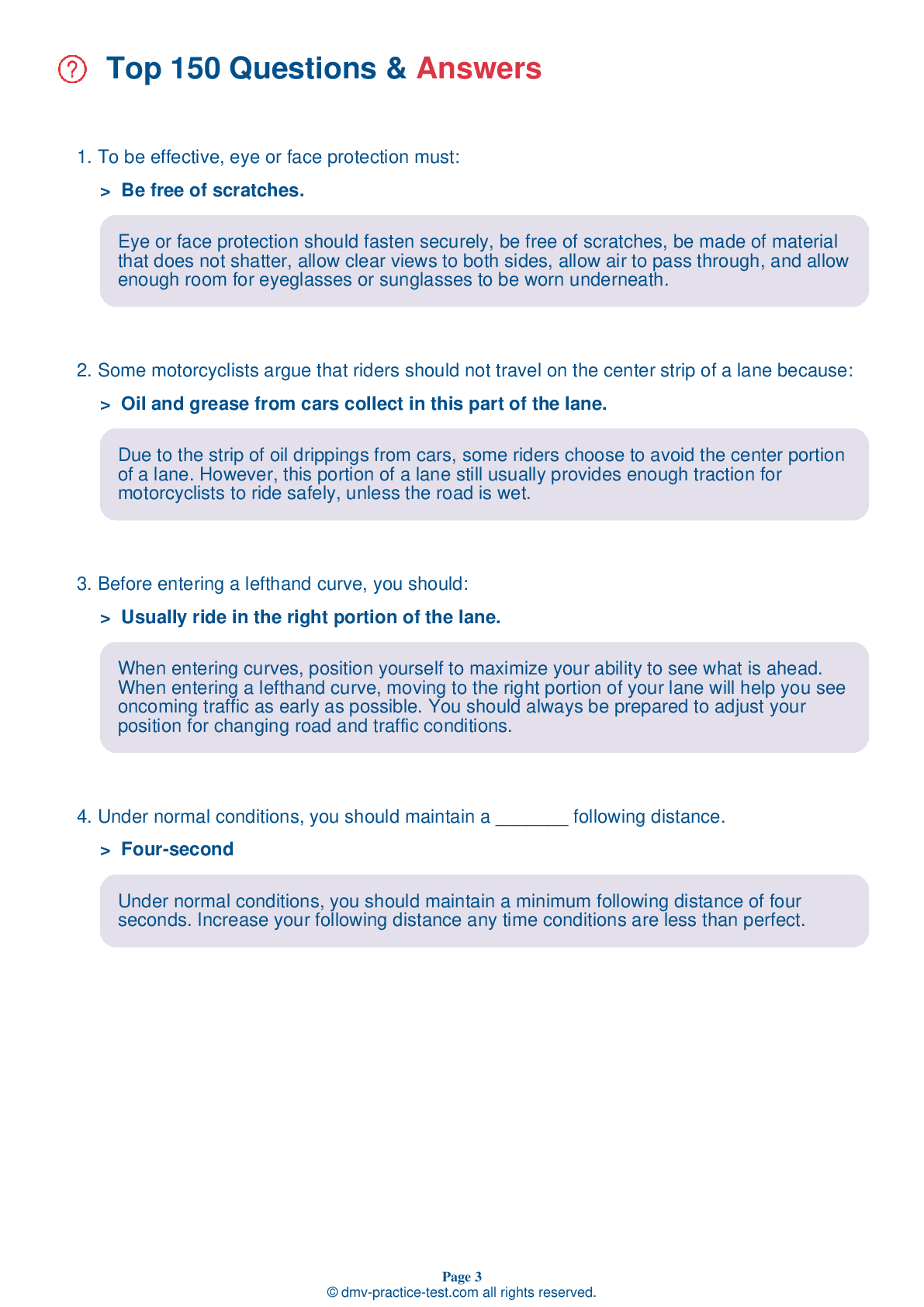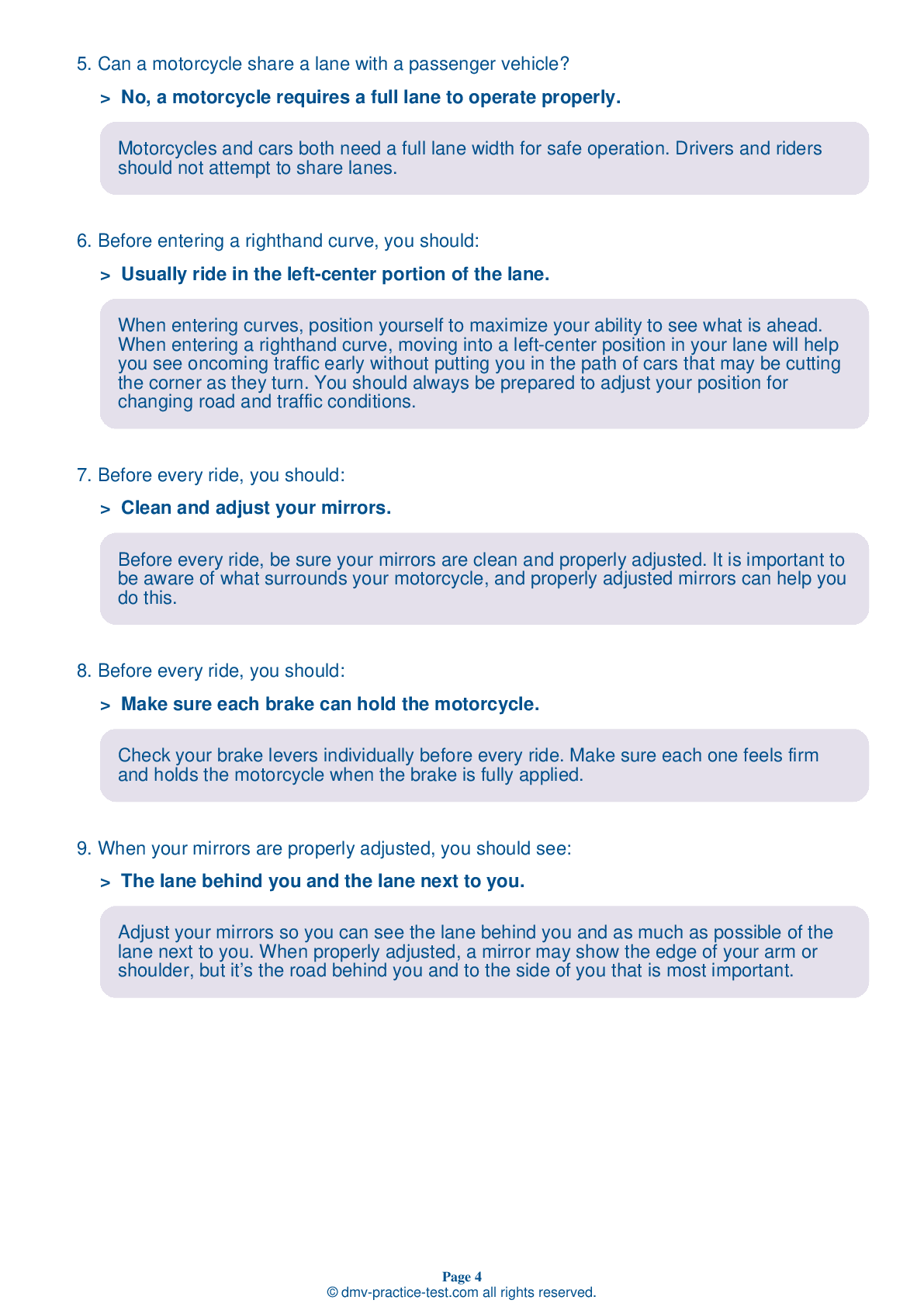Motorcycle Test | License AK 2025 | FREE Online Practice! #9 Page 3 of 4
Take this FREE motorcycle test (license in AK 2025) to check your knowledge of the road rules. To improve your results, download a motorcycle handbook online, study theory, and practice for free on our website. Still worried about how to get a motorcycle license in Alaska in 2025? Check our website for more sample tests, train as much as possible, and boost your grades!
13 . To operate a motorcycle on Alaska roads, you must have a ______ license.
A Class M motorcycle license is required to operate a motorcycle on Alaska roads. The Class M license should be in addition to a regular driver license.
14 . When a group of riders is passing another vehicle on a two-lane road, the riders should:
On a two-lane road, a group of motorcyclists should pass one at a time. Each motorcyclist should complete the pass before another begins to pass.
15 . If taking a long trip, you should:
To reduce the risk of fatigue on a long trip, dress to protect yourself from tiring elements, such as wind, cold, and rain. Limit yourself to no more than six hours of riding per day and take rest brakes at least every two hours. Avoid using artificial stimulants, as these only result in extreme fatigue when they wear off.
16 . When riding in a group:
When traveling in a group, inexperienced riders should be placed toward the front, just behind the leader, so more experienced riders can keep an eye on them from behind. It is best to keep groups small to reduce the risk of being separated and to avoid disrupting other traffic. Pairing up is a dangerous option because riders' escape routes will be blocked.
17 . Swerving a motorcycle:
Swerving is a quick maneuver that requires a lot of traction in order to be safely executed. Making sudden moves, such as swerving, on slippery surfaces should be avoided.
18 . A proper lane position should do all of the following, except:
A properly chosen lane position should provide a number of benefits, including an increased ability to see others and to be seen. It should help you avoid wind blasts, other drivers' blind spots, and surface hazards. Your lane position should discourage other drivers from trying to share your lane and provide you with an escape route, should a hazard arise.
See the exact questions that will be on the 2025 Alaska DMV exam.
99.2% of people who use the cheat sheet pass the FIRST TIME
Jeneen was tired of paying $5/gallon. She got herself a scooter that required the motorcycle license. She studyed the motorcycle test cheat sheet and passed her test the next day!
Christopher tells us how he knew nothing prior to obtaining the motorcycle study guide, and he only got one question wrong because he clicked on the wrong answer by mistake.



